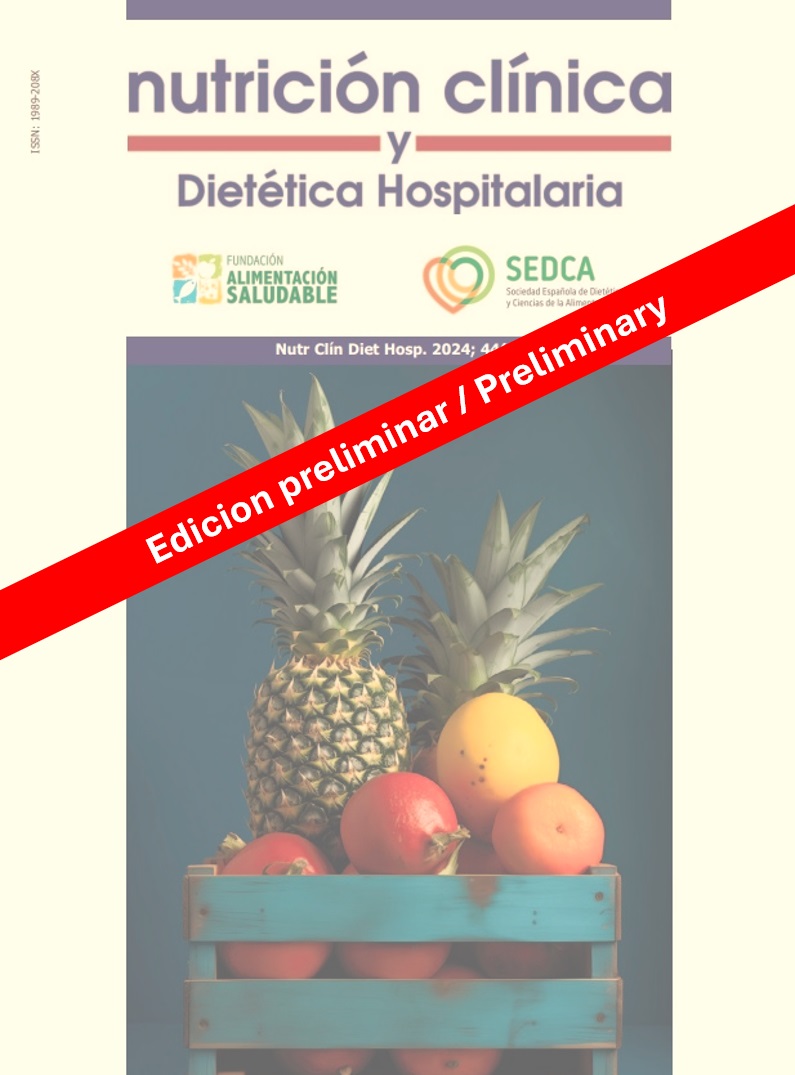Nutritional profile of preschool children with cerebral palsy attending a tertiary care medical rehabilitation centre in a low-and-middle-income country
DOI:
https://doi.org/10.12873/452aggarwalKeywords:
cerebral palsy, growth, nutritional statusAbstract
Purpose: Optimal nutrition during the early years of life is essential for maintaining optimal health across the lifespan and in children with cerebral palsy (CCP) it might enhance the motor function. Hence, we aimed to assess the status of malnutrition and the underlying risk factors among children with CP
Materials & Methods: After screening, 483 CCP, 120 CCP, aged between 2 and 4 years of age were recruited from tertiary care medical rehabilitation centre through simple random sampling technique. Demographic dimensions include, age, gender, weight, height, arm circumference, head circumference, body temperature, and other indicators like, neurological signs, and socio-economic status were collected. Nutritional profile was reported using WHO Z score charts. Chi-square statistics was used to derive the association between
Results: After screening, 483 CCP, 120 CCP [75 (62.50%) male and 45 (37.50%) female] aged 2- 4 years participated. 40.8% and 41.6% were identified to be underweight and stunned growth. Statistical significance association using Chi-square was reported only in age between 2 to 3 and 3 to 4 years in underweight (p=0.027) and stunning (p=0.0028).
Conclusion: Nutritional status of preschool children with cerebral palsy attending a tertiary care medical rehabilitation centre have been reported. Age has significant association to weight and height in CCP.
Keywords: Cerebral palsy; Children; Growth; Nutritional status.
References
Global Forum for Health Research: an overview [Internet]. [cited 2024 Jul 21]. Available from: https://iris.who.int/handle/10665/66474
The importance of infant and young child feeding and recommended practices. 2009;
Kuperminc MN, Stevenson RD. Growth and nutrition disorders in children with cerebral palsy. Dev Disabil Res Rev. 2008 Jan;14(2):137–46.
malnuetrition_currentchallenges)future.pdf.
Strand KM, Dahlseng MO, Lydersen S, Torstein B R, Finbråten AK, Jahnsen RB, et al. Growth during infancy and early childhood in children with cerebral palsy: a population-based study. Dev Med Child Neurol. 2016 Sep;58(9):924–30.
Sjakti HA, Syarif DR, Wahyuni LK, Chair I. View of Feeding difficulties in children with cerebral palsy. Paediatr Indones. 2008;48(4):224–9.
Stevenson RD, Conaway M, Chumlea WC, Rosenbaum P, Fung EB, Henderson RC, et al. Growth and health in children with moderate-to-severe cerebral palsy. Pediatrics. 2006 Sep;118(3):1010–8.
Krick J, Murphy-Miller P, Zeger S, Wright E. Pattern of growth in children with cerebral palsy. J Am Diet Assoc. 1996;96(7):680–5.
Day SM, Strauss DJ, Vachon PJ, Rosenbloom L, Shavelle RM, Wu YW. Growth patterns in a population of children and adolescents with cerebral palsy. Dev Med Child Neurol. 2007 Mar;49(3):167–71.
Spender QW, Cronk CE, Charney EB, Stallings VA. Assessment of linear growth of children with cerebral palsy: use of alternative measures to height or length. Dev Med Child Neurol. 1989 Apr;31(2):206–14.
Penagini F, Mameli C, Fabiano V, Brunetti D, Dilillo D, Zuccotti GV. Dietary intakes and nutritional issues in neurologically impaired children. Nutrients. 2015;7(11):9400–15.
Prajapati P, Patil R. Assessment of nutritional status in children with cerebral palsy. Clin Nutr ESPEN. 2019;7(12):111–5.
Dahlseng MO, Finbråten AK, Júlíusson PB, Skranes J, Andersen G, Vik T. Feeding problems, growth and nutritional status in children with cerebral palsy. Acta Paediatr Int J Paediatr. 2012 Jan;101(1):92–8.
Pascoe J, Thomason P, Graham HK, Reddihough D, Sabin MA. Body mass index in ambulatory children with cerebral palsy: A cohort study. J Paediatr Child Health. 2016 Apr;52(4):417–21.
Pollitt E, Gorman KS, Engle PL, Rivera JA, Martorell R. Nutrition in early life and the fulfillment of intellectual potential. J Nutr. 1995;125(4 Suppl).
Martorell R, Khan L, Schroeder D. Reversibility of stunting: epidemiological findings in children from developing countries. Eur J Clin Nutr. 1994;
Dipasquale V, Cucinotta U, Romano C. Acute Malnutrition in Children: Pathophysiology, Clinical Effects and Treatment. Nutr 2020, Vol 12, Page 2413. 2020 Aug;12(8):2413.
Mushta SM, Jahan I, Sultana R, McIntyre S, Badahdah A-M, Almasri NA, et al. Burden of Malnutrition among Children and Adolescents with Cerebral Palsy in Arabic-Speaking Countries: A Systematic Review and Meta-Analysis. Nutrients. 2021 Sep;13(9).
Almuneef AR, Almajwal A, Alam I, Abulmeaty M, Bader B Al, Badr MF, et al. Malnutrition is common in children with cerebral palsy in Saudi Arabia - a cross-sectional clinical observational study. BMC Neurol. 2019 Dec;19(1):317.
Hartley H, Thomas JE. Current practice in the management of children with cerebral palsy: a national survey of paediatric dietitians. J Hum Nutr Diet Off J Br Diet Assoc. 2003 Aug;16(4):219–24.
Samson-Fang L, Stevenson RD. Linear growth velocity in children with cerebral palsy. Dev Med Child Neurol. 1998 Oct;40(10):689–92.
Stevenson RD, Haves RP, Cater LV, Blackman JA. Clinical correlates of linear growth in children with cerebral palsy. Dev Med Child Neurol. 1994;36(2):135–42.
Henderson RC, Grossberg RI, Matuszewski J, Menon N, Johnson J, Kecskemethy HH, et al. Growth and nutritional status in residential center versus home-living children and adolescents with quadriplegic cerebral palsy. J Pediatr. 2007 Aug;151(2):161–6.
Yousafzai AK, Pagedar S, Wirz S, Filteau S. Beliefs about feeding practices and nutrition for children with disabilities among families in Dharavi, Mumbai. Int J Rehabil Res. 2003 Mar;26(1):33–41.
Herrera-Anaya E, Angarita-Fonseca A, Herrera-Galindo VM, Martínez-Marín RDP, Rodríguez-Bayona CN. Association between gross motor function and nutritional status in children with cerebral palsy: a cross-sectional study from Colombia. Dev Med Child Neurol. 2016 Sep;58(9):936–41.
Aggarwal S, Chadha R, Pathak R. Nutritional status and growth in children with cerebral palsy: a review. Int J Med Sci Public Heal. 2015;4(6):737–44.
For children and young people (5 to 17 years) | Australian Government Department of Health and Aged Care [Internet]. [cited 2024 Jul 21]. Available from: https://www.health.gov.au/topics/physical-activity-and-exercise/physical-activity-and-exercise-guidelines-for-all-australians/for-children-and-young-people-5-to-17-years
Downloads
Published
License
Copyright (c) 2025 Nutrición Clínica y Dietética Hospitalaria

This work is licensed under a Creative Commons Attribution-NonCommercial-NoDerivatives 4.0 International License.
Los lectores pueden utilizar los textos publicados de acuerdo con la definición BOAI (Budapest Open Access Initiative)







